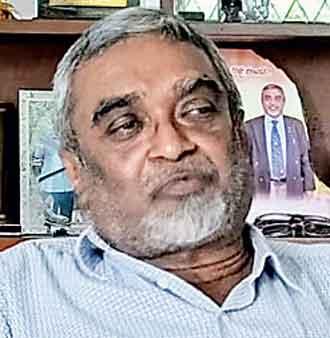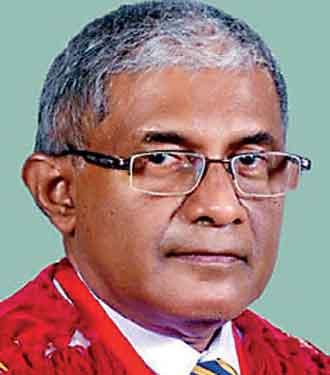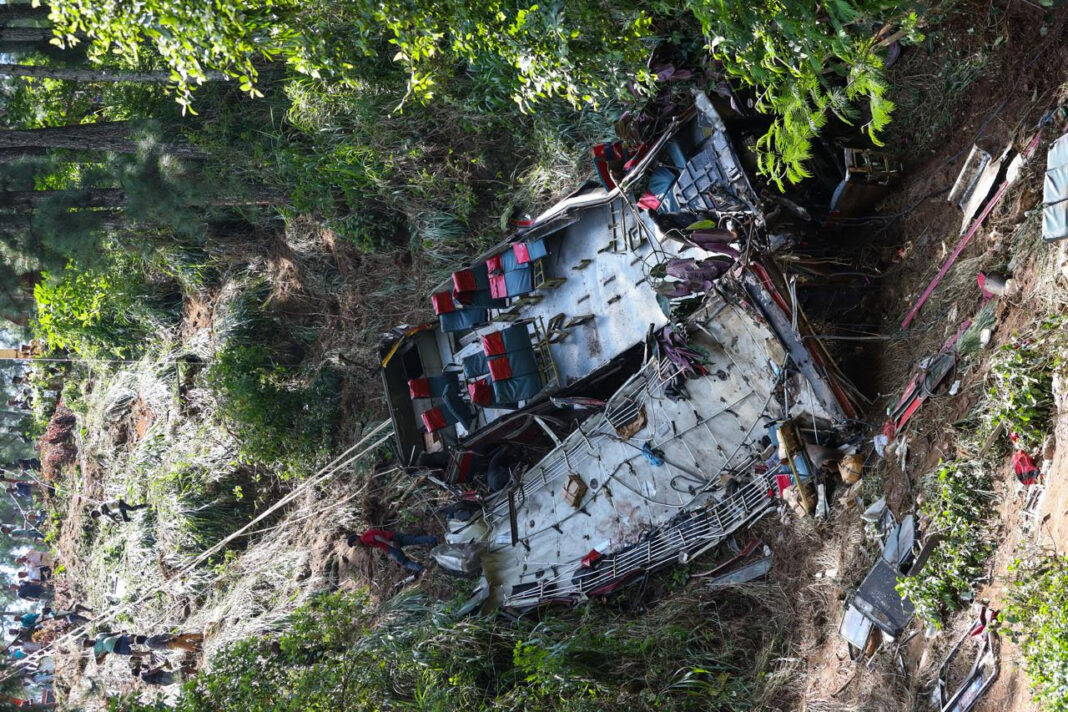Kamanthi Wickramasinghe /Daily Mirror
WORLD BANK ESTIMATES SRI LANKA IS WASTING AN AMOUNT EQUAL TO ITS ANNUAL HEALTH BUDGET ON ROAD TRAFFIC CRASHES
THE ISSUE OF SUBSTANDARD PUBLIC TRANSPORT SEEMS TO HAVE CONTINUED OVER SUCCESSIVE REGIMES
FREQUENT ACCIDENTS UNDERSCORE THE NEED TO IMPLEMENT A NATIONAL ROAD SAFETY ACTION PLAN
SRI LANKA ONCE HAD A THRIVING BUS ASSEMBLING INDUSTRY FOR BOTH CTB AND PRIVATE BUSES
Despite repeated revelations of importing lorry chassis for public transport, successive governments have turned a blind eye to this issue, reportedly in place of obtaining financial gains. The issue of substandard public transport seems to have continued over successive regimes, taking a toll on passengers each year. On the other hand, the number of accidents that takes place on a daily basis speaks volumes about lapses in implementing a national road safety action plan under one authority, imposing fines and charging individuals found guilty of violating traffic rules. Even though the incumbent government recently appointed a Presidential Task Force on Road Safety, expert groups have expressed their disappointment over not being able to meet with the President to discuss feasible solutions to minimise road accidents.
History of importing lorry chassis for buses
The Daily Mirror sat down for a conversation with the man who first identified a consignment of lorry chassis imported from India to be assembled as buses for public transport. Having joined Sri Lanka Customs in 1978, as a Customs Officer (Class II), Dr. Ranjan Dantanarayana gradually rose up the ranks until he served as a Director of Customs prior to his retirement in 2014. Between 1993 and 1997, Dantanarayana served as Superintendent of Customs (Classification). He explained it as the most important job role at the Customs office, which included determining correct duty rates, identifying goods and classifying them into respective HS Codes recommended by the World Customs Organization.

It was around this time that another branch had referred a Customs Declaration form to him. “This was regarding a duty rate and classification and it was submitted by a popular importer of high end motor cars and chassis,” he recalled during the interview. “So, once I got the documents I informed the wharf clerk to provide specifications of lorry chassis and bus chassis because the consignment was originally declared as bus chassis. At the time there was an assembling plant in Siyambalape and another one for Ashok Leland buses. Once I got down the classifications I noticed some discrepancies in lorry chassis and bus chassis declarations. With both documents in hand I went to the harbour and randomly checked all the chassis. Physically it cannot be identified, but with the specifications and my knowledge I understood that these are lorry chassis with thick frames,” he explained.
The lorry chassis had been imported from India as it is a cheaper option. But Dantanarayana recalled a thriving bus assembling industry for Ceylon Transport Board (CTB) and private buses at the time. Following the identification of lorry chassis, Dantanarayana had submitted a report to the customs hierarchy at the time, indicating that the goods were in fact lorry chassis and that the classifications should be different. “The report was referred to the ADC, Deputy Director and Director of Customs. After they studied the report they decided to inform the importer to declare the goods as lorry chassis. At the time due to the local assembling industry there was a concessionary rate for bus chassis. The duty and value of lorry chassis were high because they are heavy duty chassis. The importer then made an appeal to the World Customs Organization in Brussels. But the latter replied to the DG Customs via a highly technical report indicating that the goods were lorry chassis and not bus chassis. Thereafter the importer paid the relevant duty rates in order to obtain a Customs clearance,” he added.
A foolproof solution
In a letter dated January 10, 2025, Dantanarayana had written to President Anura Kumara Dissanayake explaining the history of importing lorry chassis into the country to be used as buses for public transport. In this letter he also proposes a foolproof solution to detect accurate chassis prior to issuing a Customs clearance.
“My solution is that when chassis are being imported, either lorry chassis or bus chassis, they should be examined by a chartered mechanical engineer from a government institution,” he further said. We don’t have that expertise in the Customs. We get graduates IT, administration, management etc. but we have no experts in mechanical engineering. Likewise we send food and drug items to the Food and Drug Inspector at the Health Ministry, some items to Sri Lanka Standards Institutions and so on. We are not experts and we send them to the authorities. Every item that is being imported is being checked, otherwise the relevant officer in charge will be in trouble without seeking approval from relevant authorities. Sri Lanka Customs began in 1806 and since then even the British have followed these procedures,” he explained.
Dantanarayana further said that once the engineer submits the reports, the chassis numbers of lorry chassis can be sent online to the Registration of Motor Vehicles (RMV). “When a bus is being registered they can detect it immediately and if it is mounted on a lorry chassis they can reject it. This is a 100% foolproof method. Ever since this was detected by myself, it had been happening.
This is a lucrative business but it is a blow to the local assembling industry. The Transport Minister said that they are going to import luxury buses from India, but imagine the cost of a luxury bus? Then what about the number of buses? Bringing around 100 buses is not a solution. In that case they have to import at least 4000-5000 buses which is not practical,” he added.
When asked about a proposal to import buses from Japan, Dantanarayana responded in the negative. He said that Japanese buses are expensive. “There can be all sorts of proposals, but they are not practical,” he said while adding that he’s hopeful that the incumbent government would take prompt action to improve the quality of public transport.
In fact his letter was acknowledged by W. M Bhathiya Wijayantha, Senior Assistant Secretary to the President (Public relations). The letter states that the recommendations to regulate the import of lorry chassis proposed by Dantanarayana would be taken into consideration and that his support is required to implement a solution to this crisis.
The physics behind traveling in lorry chassis
When inquired, a senior official at the National Transport Commission said that despite repeated requests to stop importing lorry chassis to be used as buses, subsequent governments ignored such requests due to financial gains. “Most of the time people complain that they are tired after traveling in buses. This is because when brakes are applied in buses mounted on lorry chassis the force is felt on people traveling in its rear end. But contrary to lorry chassis, bus chassis are designed with several compartments like that in trains so that there are breaks in between. Therefore in case if brakes are applied the force is evenly distributed. Lorry chassis are in fact designed to transport goods, not people,” the official explained.


“My solution is that when chassis are being imported, either lorry chassis or bus chassis, they should be examined by a chartered mechanical engineer from a government institution. We get graduates IT, administration, management etc. but we have no experts in mechanical engineering”
– Dr. Ranjan Dantanarayana, former Director of Customs
In 2020, the then Minister of Transport Mahinda Amaraweera announced that the import of lorry chassis to be used in public transport would be banned. Subsequently the Cabinet approved the formation of a Cabinet sub-committee comprising stakeholders from Ministries of Transport Services Management, Industry and Supply Management and Education to submit a report on ‘specifications and criteria to be considered for the importation of buses in future’. But these decisions and reports never saw light of day.
The NTC official further said that there are various specifications to be followed such as the materials with which the buses are being made. “If it’s fiber or plastic the bus owners have to add aluminum to prevent buses from catching fire. But these have been ignored and they continue to blame private buses. We have seen accidents in buses traveling to Jaffna and even Trincomalee, but people weren’t severely injured. This is because private buses adhere to NTC’s regulations. But the CTB wants to gain profits at the expense of people who eventually become victims,” the official underscored.
How multi-sectoral lapses contribute to road accidents
Apart from the materials used to mount buses, medical experts have repeatedly questioned successive governments on lapses in providing a feasible solution to minimise road accidents, injuries and deaths. One of the observations made by Samath Dharmaratne, Professor of Community Medicine and Chair of the Expert Committee to prevent road accidents at Sri Lanka Medical Association (SLMA) is that road accidents, injuries and deaths happen due to multi-sectoral causes. The SLMA on several occasions suggested that the government should establish a Presidential Task Force to prevent road accidents. He said, “The purpose of a Presidential Task Force should be to bring all stakeholders to one table, bring their programmes and preventive actions together and work according to one concrete plan” and added, “What is required is to expedite one action plan rather than implementing a lot of actions in an ad hoc manner,” he added.
He said that when a meeting is convened certain ministries and departments would send their representatives. “They have to go back and seek approval from their superiors. It’s not that these departments and ministries are not doing anything but there’s no coordinated effort. Certain interventions such as educating people to travel properly on the road are being done by various stakeholders. But certain other interventions have been neglected. Everyone is working in their own comfort zones and are reluctant to come out of them,” he added.
Prof. Dharmaratne further said that Sri Lanka doesn’t have a national road traffic prevention or road safety plan. “But when questioned various stakeholders say they have a plan. Yes, the health ministry has one plan, transport ministry has another, highways ministry has another. These are being drafted using grants and with the consultation of experts. But none of these plans are being integrated into one national plan overlooked by one institution or authority,” he claimed.
He further said that the SLMA hasn’t had a chance to meet any of the presidents to discuss about road safety. “We have written to Mahinda Rajapaksa, Maithripala Sirisena, Ranil Wickremesinghe, Gotabaya Rajapaksa and the incumbent President as well. We are just asking for a meeting and it’s not a personal issue. The SLMA is a body of medical experts and perhaps the President never sees these letters. Unfortunately it’s my inability or SLMA’s inability to convince policymakers about the real issue at hand,” he said while adding that according to World Bank estimates, Sri Lanka is wasting an amount equal to its annual health budget on road traffic crashes and that it had been an issue over successive regimes.
Proposals to minimise road accidents
Prof. Dharmaratne discussed various observations he has made when commuting. “The issue of lorry chassis being imported for buses had been revealed multiple times. Buses are what tourists travel in. What we travel in are not buses. They are suitable for transporting goods. On the other hand buses have doors which need to be closed, but I haven’t seen doors being closed in normal buses,” he observed.
“On the other hand, children are being transported in school vans and a majority of these vans too are not suitable to transport people,” Prof. Dharmaratne added. “They are suitable to take goods. So we bring them and install seats to transport passengers. Another issue with regards to safety is where you see children traveling without helmets on bikes. Our conclusion is that in Sri Lanka, a child’s skull is harder than that of their parents which is why they don’t wear a helmet,” he laughed.
In terms of suggestions he said that with more people being admitted to government hospitals due to road accidents, the person who caused the accident should ideally pay for that treatment. “We have free healthcare and when someone pays for a treatment that money could be used on an actual patient. Secondly, whoever who is taking children in bikes without helmets should be charged. Thirdly, fines also need to be increased to around Rs. 100,000 so that people would think twice before breaking road rules,” he added.


The purpose of a Presidential Task Force should be to bring all stakeholders to one table, bring their programmes and preventive actions together and work according to one concrete plan. What is required is to expedite one action plan rather than implementing a lot of actions in an ad hoc manner”
– Prof. Samath Dharmaratne, Chair of the Expert Committee to prevent road accidents at Sri Lanka Medical Association
Prof. Dharmaratne said that it is high time that a law is introduced to use CCTV footage of road accidents as evidence to charge perpetrators. “When you watch these footage you realize the kind of foolish things you do on the road,” he said.
He further said that experts should look at integrating technology to minimize road accidents. Another suggestion is to introduce a point system where points would be deducted depending on the driver’s performance. “If you lose all points per year and if it continues over several years people will not be able to drive for life. During long weekends they will have double demerit points. When people are aware of it they will plan to keep points by driving properly,” he added.
Prof. Dharmaratne said that there’s a trend of very old people driving three wheelers, school vans and buses. Therefore he suggests introducing a law to bring about a retirement age for drivers. He said that in other countries it is very difficult to be a professional public transport driver.
Another observation made by the SLMA is that more people have died due to road accidents between 2009 and 2019 than during the war, indicating the gravity of the situation at hand. Prof. Dharmaratne claimed that none of the authorities or successive governments have used traffic police data for policy making. “They only tell what is happening and figures of injuries and deaths. Policy making through data could also be done by a high level committee or Presidential Task Force,” he said in conclusion while adding that interventions need to begin from zero.
